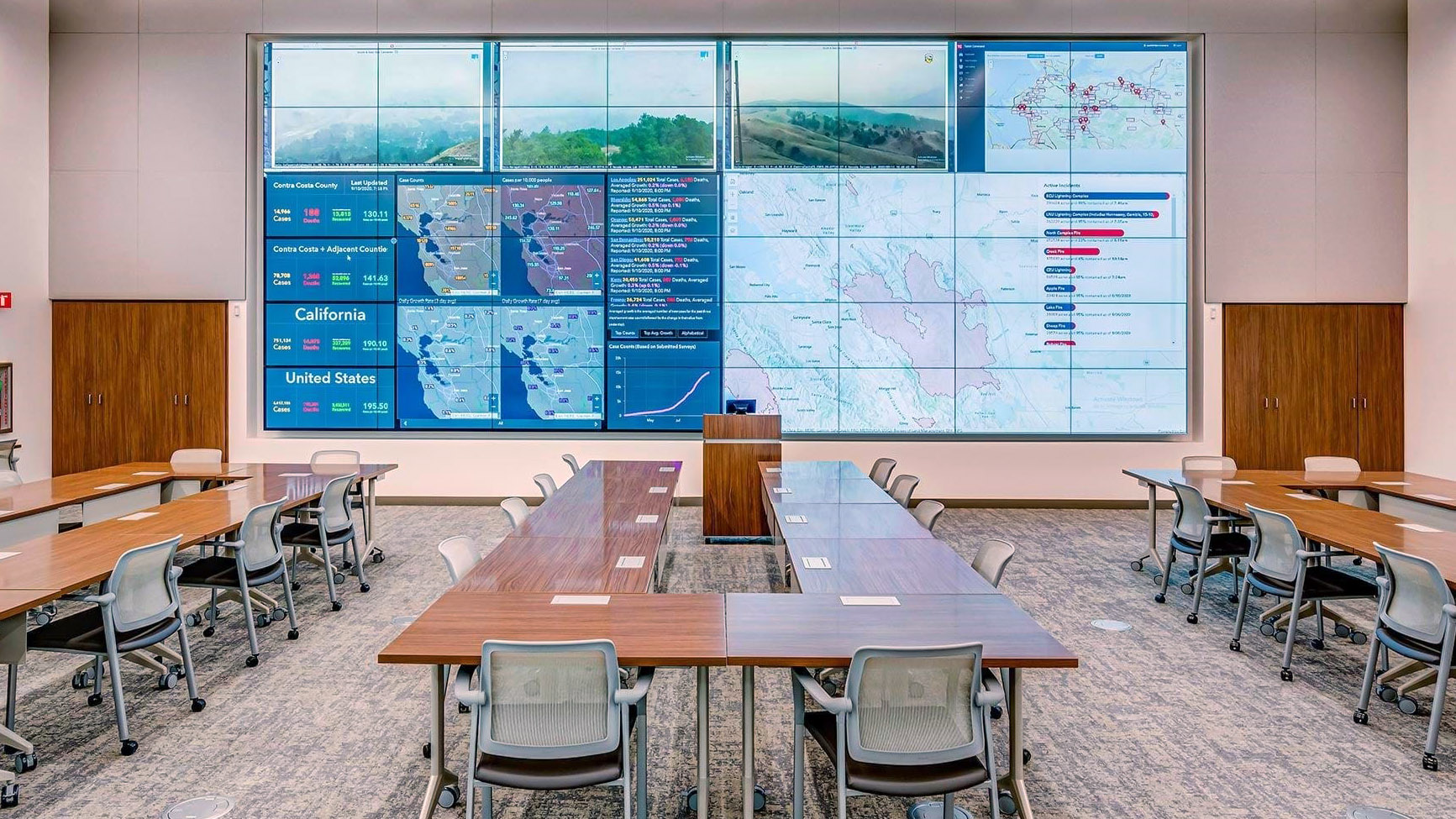RGB Spectrum Helps Contra Costa County Improve EOC
A Galileo display processor and Zio AV-over-IP platform deliver mission-critical, real-time video solution.

California’s Contra Costa County has opened a new Emergency Operations Center (EOC) featuring a Situation Room equipped with the latest real-time visualization technology. With 13 conference rooms, 22 offices, and a press briefing auditorium, the EOC serves as a command center from which officials can direct the mobilization of municipal, county, and private resources in the event of a crisis or natural disaster. The Situation Room is equipped with a combination of RGB Spectrum’s Galileo display processor coupled with its Zio AV-over-IP platform.
Contra Costa County selected the RGB Spectrum solutions for their 24/7 reliability, support for diverse signal sources, ability to disseminate information to local and remote locations simultaneously, and 4K image quality. Rosendin Electric, a highly experienced AV integrator based in San Jose, CA, was commissioned to design and deploy the EOC’s visualization system.
At the core of the Situation Room is a 32x13.5-foot video wall, comprised of 48 55-inch Planar Clarity Matrix G3 LCD video wall displays, flanked by four 86-inch auxiliary displays interspersed throughout the room. The Galileo processor consolidates critical visuals and data to provide a centralized, correlated view of the tactical situation.
Individual visuals, portions of the video wall, or the entire video wall image can be shared throughout the facility and with remote locations—allowing officials to collaboratively view this information for assessment and analysis. Communications are bi-directional, with conference rooms and remote locations able to send visuals for display on the EOC’s video wall.
[SCN 2021 Installs of the Year]
Source signals are displayed in windows of any size. Operators can easily switch and route inputs, choose customizable, preset display layouts, and pan and zoom around items of interest. A third-party touch screen controller allows operators to quickly change display layouts and route signals.
“It is extremely important for EOC personnel to be able to investigate an incident and make decisions on deploying resources, explained Rick Kovar, emergency services manager for the Contra Costa County Sheriff’s Office. “One of the things we learned from previous disasters is that we need to maximize situational awareness. The video wall is key for achieving this. In a wildfire situation, for example, we have access to fire cameras across the county. We have GIS maps that display hotspots. There’s data available from a variety of sources. RGB Spectrum’s systems allow for their efficient transmission and display to all decision makers. This improves the common operating picture throughout the facility.”
A daily selection of the top stories for AV integrators, resellers and consultants. Sign up below.
A critical requirement was to share visuals and data both throughout the EOC and with off-site agencies. Critical information is simultaneously displayed on the video wall and shared with remote facilities via IP video streams on LAN and WAN networks, with a VPN for added security. To share visuals with remote locations, the Zio platform supports both baseband inputs and IP streams at up to 4K/60p resolution, including maps, news feeds, TV broadcasts, interagency communications, Internet data, traffic management systems, surveillance cameras, and the Galileo video wall itself.
All video, audio, and control data are converted to IP packets that are switched and routed to any location on the network via a LAN/VPN. Zio encoders ingest baseband inputs and encode them into H.264 streams that are fed to recipients inside and outside the facility. The Galileo processor and Zio decoders display IP streams from Zio encoders as well as third-party IP cameras and other H.264 devices.
